‘Fathers of Modern engineering’; Who are they?
The word ‘Engine’ was coined from the Latin word ‘Ingenium’ which means ‘innate quality’, engine itself was used to refer to a military machine; in 1325,the word ‘engineer’ was coined from engine to mean an operator of a military machine and hence engineering was derived this word (engineer). The invention of Engineering as a word itself was a clever one, but more clever and mouth-gaping is what the process and activity of engineering has come to be in the history of mankind. Prior the naming of this act, engineering as a process of life itself is as old as mankind and it is pertinent to say that the first human to inhabit the earth was also the first engineer.
.jpg)
An ancient Roman building. Source:Wikimedia - CC BY-SA 3.0.
Man’s quest to fit in to his environment amidst challenges has led to invention of many aids from the readily available materials in his environment, this has evolved over the years and the process as well as its products have come to shape the way we live.
The activities of people who inhabited the earth over a million years ago have had a major influence on our contemporary world, during my high school days, I could remember my teachers arguing over the possibility of many present day mountains being ‘man made’; a hypothesis I feel could be true. This is due to the super intelligent abilities of these people which paved way for a new and better world.
According to the theories of evolution, there is the possibility of life originating from just one place, however as procreation and human migration continued, human existence dispersed and so also was the craft of engineering, architecture, science and technology. People over different areas of the world in the quest to comfortably inhabit their new found environment and to modify their already existing unfavorable environmental conditions developed several tools and erected several structures which will not only keep them safe but also simplify several activities which they performed, this includes hunting, fruit and seeds gathering, substantial agricultural and communal communication. Many inventions came by accident in the process of a proposed research while some were conscious product of a planned development or modification as the case may be.
Technology and engineering hence developed at different places in different perspective and mode as everyone produced things as a response to their environment and the environment has thus had a huge influence in what exactly worked in a given place and hence what they invented.
However, development and civilization unified the world and many parts of the world have come into contention as regards who actually is the originators of engineering, unarguably many ancient destinations such as Egypt, Rome and Greece have been more pronounced in the documented history if engineering, technology and the world as a whole, and as a proof, most historic engineering relics could be traced back to these ancient countries which still exists as more or less the same unit in out contemporary time.
But who are really the fathers of engineering???
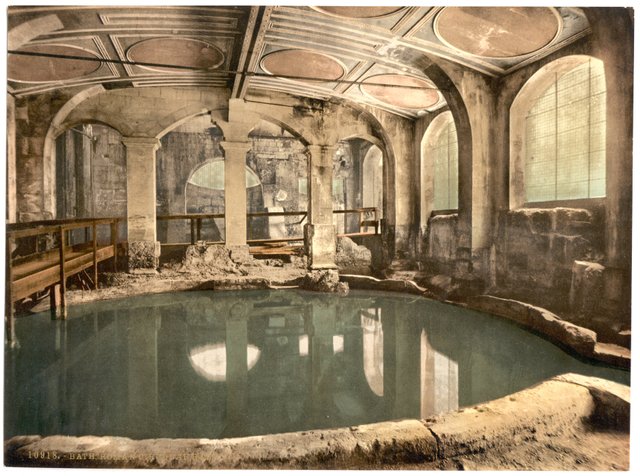
An ancient Roman water bath. Source:Wikimedia - CC BY-SA 3.0.
The implementation of enormous man-power and combined effort ensured the accomplishment of these tasks, aided by their abundant slaves, the much needed human power were provides and this simplified these constructions. Several present day form of these historic structures works in almost a similar principle as these ancient forms. The widespread technological expertise can be seen in the following aspects :
Human Transportation
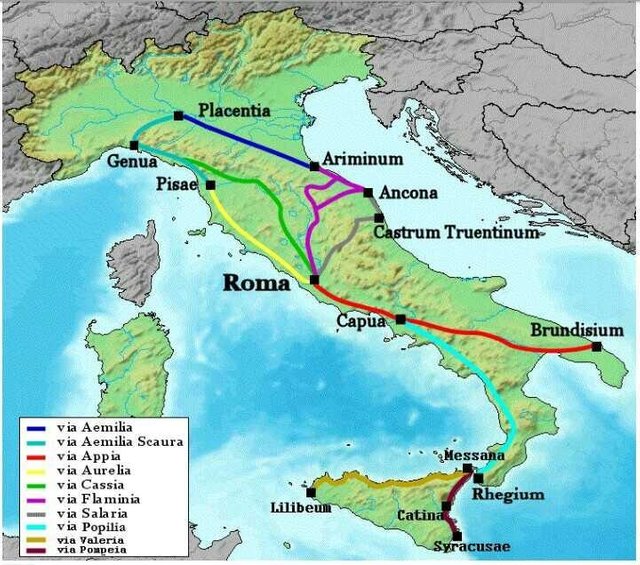
A map of Roman roads in italy. Source:Wikimedia - CC BY-SA 3.0.
Very peculiar to you is the orientation that the government are tasked with the construction of roads, this is so in almost every part of the world as this orientation have been in place for many centuries past. The Roman Empire was growing, and thus came the need for a reliable connection between several places of importance to hasten communication and interaction for economic and administrative purposes, hence the need for roads, bridges and tunnels. Present day roads are built with rocks, this is same with the ancient Roman roads, only difference may lie in the sort of rocks being used and some missing additives in each case.
The Via Appia, the first ancient Roman road built in 312 BCE, was constructed by setting curb stones and digging a long put between them; the long pit which extended throughout the length of the road. These stones were covered with gravels which was compacted and another layer of gravel added, this first layer of gravel enabled the road to reset freezing and floods, hence little maintenance was required, these roads were inclined to allow water flow to the curbs on either side of the road; a technique employed by present day civil engineers.
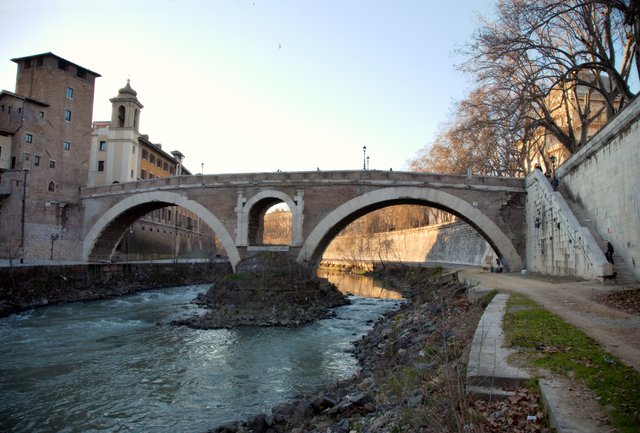
pons fabricius,an ancient Roman bridge. Source:Wikimedia - CC BY-SA 3.0.
But several areas which requires this connection was occupied by very large water bodies, this gave birth to the idea of bridges which are not so different from our present day bridges. With the aid of cofferdams (temporary enclosures made from wooden piles sealed with clay ), the Romans were able to make piers driven into the riverbed. The bridges were equipped with Arches which ensured adequate distribution of weight throughout the bridges, this was known as Voussiors, this is evident in the present day Alcántara bridge, many of the Roman bridge are still in existence.
Water Supply
Probably the last time you experienced someone getting water from a stream with water containers was in your television screen, civilized water distribution schemes has improved water hygiene and reduced the perils of water availability and many places which do not have a natural water body exists comfortably. The principles of water distribution to areas of water scarcity from a big water body also dates back to 312BCE with the construction of the Roman Aqua Appia, their first aqueduct.

A map showing the routes of water distribution from the aqua Appia Source:Wikimedia - CC BY-SA 3.0.
This constitutes of tunnels, pipelines and ducts which circulates water into the cities and towns from far away mountains and springs, this employed the theory of gravity as the tunnels were inclined to allow downward flow of water with tanks positioned at intervals to regulate the flow of water, Arcades were also used to transport water over valleys and low -lying terrains. The aqueducts enabled the distribution of water over 100kilometers distance, this was channeled for public and private uses and the use of water baths were also initiated as this as this allowed it’s implementation; the only basic difference between the ancient day aqueduct and present day water distribution schemes is that while the Roman aqueducts worked with the principle of gravity, present day water supply technology makes use of water pumps, other ideas are relatively similar.
Even though the Romans made many ground breaking constructions, many of these were a development of already existing ideas, aqueducts already existed many centuries before the Aqua Appia in the near east, the use of curves, and arches which are important aspects of most Roman constructions are not traditional to them as such structures have been used in several buildings which were erected several years before their first use of this technique. So, are they the fathers of ‘Modern engineering’ or the ‘Original’ fathers of engineering? Your answers are needful, but personally I’d say NO and take you around a little bit more and maybe you could change your ‘original’ to ‘mordern’.
Egyptians; where do the Pharos stand?

Egyptian pyramid. Source:Wikimedia - CC BY-SA 3.0.
Unarguably ,the most historic African country and maybe one of the most popular, very pronounced in ancient relics and books such as the Bible, Egypt is dubbed the ‘first civilized’ nation on earth and the origin of man kind is not far from Egypt. ‘First World power’ as many others would say. Egyptian engineering still puzzles present day scientists and engineers, not only are their architectural prowess one of a kind, their artistic skills are unmatched. Many of the present day engineering basics which are really the fundamentals of engineering and technology can be traced back to Egypt who have full claim of these inventions.
The Egyptians may not have built awesome roads, bridges and water distribution systems, many of their constructions may have been demolished or washed away by water, but no doubt, they have contributed recognizably to technology and engineering, this can be seen in:
Measurements
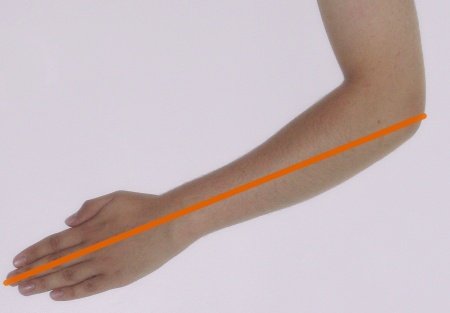
A cubit. Source:Wikimedia - CC BY-SA 3.0.
Your height is probably 5-7 feet, maybe a little bit below or over this range with some inches, many measurements you know are in cubits, this systems of measurement could be traced back to the ancient Egyptian architects who made use of their body parts in several measurements, this was used in several constructions including the pyramids and the much popular Egyptian tombs, present day modification of this system of measurement is only a standardization of this earliest techniques as there are variations in body sizes and the length of one’s foot and cubit — distance between the elbow and the tip of the finger differs at most if not all times, however, they made precise measurements with these techniques
Bricks
Apart from a good foundation and building sketch, another factor which ensured the durability if a building is the strength of materials used in its construction, this includes the bricks, the Romans may take credit for the invention of concretes but certainly not the bricks.
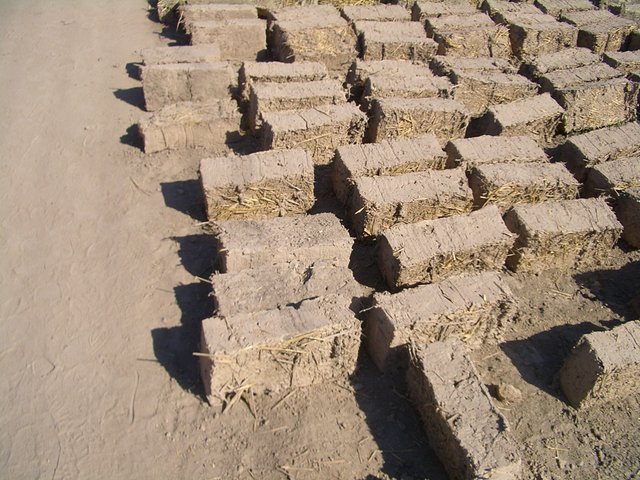
Mud bricks. Source:Wikimedia - CC BY-SA 3.0.
The idea of bricks was borne out of the scarcity of woods, hence the need for an alternative which was the use of bricks made from Stones such as limestone, sandstone, granite and more popularly, the mud bricks.
Mud bricks were made from mud collected from the banks of the river Nile, these were placed in a mould of desired size and shape and allowed to dry under the hot sun, this was hardened and used in the building of structures and several other constructions which includes the pyramids of Giza, fortress of Jaffa, Temple of Karnak.
Egyptians also had enough slaves, hence enough man power and huge trust and harmony which existed between their architects and other workers who were not slaves ensured that these constructions were a huge success. The Egyptian pillars and building plan techniques are still applied in our present day buildings. Most of these techniques were purely developed by the Egyptians and most of these structures such as the Tombs and the pyramids are traditional to Egypt but unfortunately, many of them are not as strong as the Roman buildings and as a result have been demolished or only parts of them are left over, but their originality is undoubted.
But, is the tussle between Egypt and Rome only? I guess not, many ancient places which are known presently also had awesome roles they played in development of contemporary architectural and engineering techniques. So where is the rest of the world?
GREECE — THE AUTOMATORS?
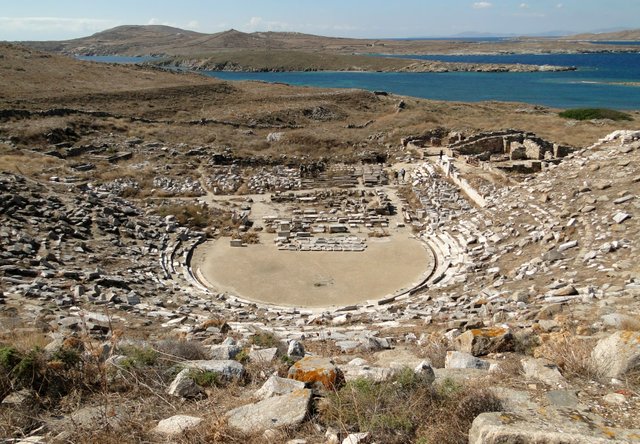
An ancient Greek theatre in Delos. Source:Wikimedia - CC BY-SA 3.0.
While the Egyptians and Romans boast of awesome architectural skills, the Greeks are very much pronounced in the history of automatic gadgets which could fiction without much aid from the external environment.
Hopefully you’d hold Greeks in high esteem as just a bunch of very clever philosophers, but philosophy is the mother of all sciences and learnings as everything is borne out of the mind. The Greeks were clever minds and even though philosophy is as old as mankind, they are decorated as the ‘fathers’ of philosophy, being the home to most pronounced old days philosophers and scientists — Plato, Socrates Pythagoras, Ptolemy, Archimedes and a host of others .
Ancient Greek technology is seen in the following :
Automation science
On visits to some high class business settings and institutions, I guess you didn’t have to push the doors, or may be you didn’t have to apply much force before the doors pulled open, if you’re a witness of the former, then hopefully you will appreciate the much energy which automated stuffs saves you. The ancient Greeks loved this feeling too and hence applied much expertise in creating things which worked on their own. But not only do the Greeks love automation, they also put in an awesome energy in developing and specializing these structures, the automatic doors you used could be traced back to the ancient Greece.
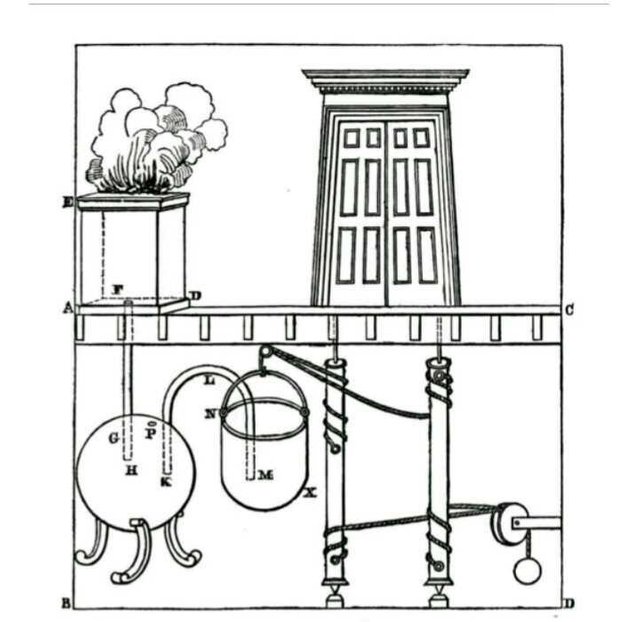
A sketch of the automatic door built by Heron of Alexandria. Source:Wikimedia - CC BY-SA 3.0.
The earliest known automatic door was created by Greek scholar Heron of Alexandria in the 1st century AD. The door was powered by a steam engine. The steam engine was in turn supplied from the sacred fire in the temple where the door was used, the heat from the sacred fire activated the doors. While sacrifices were made, a burglar alarm system was also attached to the door so as to send signals in case of unsolicited entrance or exit into or from the temple respectively. Burglar alarm systems are also attached to most of our present day doors and alarm systems which detects present day doors in our banks.
In very much developed area, the presence of a seller may not be needed in some cases as vending machines which are engineered to dispense a given quantity of items relative to the amount you dropped into the vending machine or the amount you keyed in ( for electronic vending machines) is in use; the accuracy of these machines are top-notch as exact quantities are measured in correspondence to the amount of money.
Heron of Alexandria designed the first known vending machine in the first century AD, this machine worked with the principle of ‘weight detection’. The vending machine which is structured to dispense a given amount of holy water relative to the weight of the coin dispenses just the amount of holy water which corresponds to the coin’s weight. The machine tilts in response to the weight of the coin, hence a heavier coin will raise the lever higher, the machine continues to dispense the Holy water until the coin drops off. This principle is similar to that used by our present day vending machines and automated dispensers.
Levers and Gears.
Elementary physics students would have a good knowledge of what levers and gears are, but only professional engineers can adequately appreciate the roles played by gears and levers in technology, especially in mechanics, while your mechanical clocks and automobiles applies the principles of gears, the lever is also an indispensable part of many mechanical gadgets; first second and third class levers applies the principles of varied placement of a fulcrum and effort application source to enable the lifting on a give load. Pulleys are also important on mechanical engineering and are somewhat related.
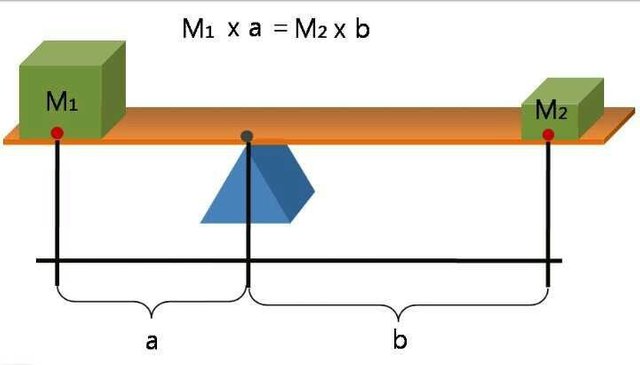
principle of lever action. Source:Wikimedia - CC BY-SA 3.0.
Levers were used in prehistoric times, but the Greeks were the first to put it in use for the development of awesome technologies. Greek mathematician Archimedes described the lever and it’s principles in 260BCE. “Give me a place to stand and I shall move the earth with it” he said as he unraveled the correct principle of the lever. The lever consists of a hinge connected to a beam with only a little friction between the beam and the hinge, thus the effort applied is almost equal to the power output, the distance between the load and the effort applied also plays a vital role in the power output.
The mechanical advantage of the lever is the ratio of force output to the effort applied and can be determined by balancing the moment and torque. The classification of levers is based on the location of the fulcrum, effort and load.
.jpg)
The Antikythera mechanism. Source:Wikimedia - CC BY-SA 3.0.
The Greeks also developed the prehistoric gears into a more functional tool and enabled it’s application in several other technologies. The Antikythera mechanism which enables the first astronomical analog computer in the world used dozens of gears and aided the study of stars and the celestial bodies and has led to many discoveries about the earth and other planets and made accurate studies have been made via this mechanism.
In conclusion…
With much said about Europe and Africa, other continents also has a place in history as regards the development of engineering and technology that has come to change the whole face of things throughout the world. While the early Americans boasting awesome agricultural and food production technology which includes the irrigation scheme, the Asians especially the China Empires has also come up with several technological inventions which are of great use in today science.
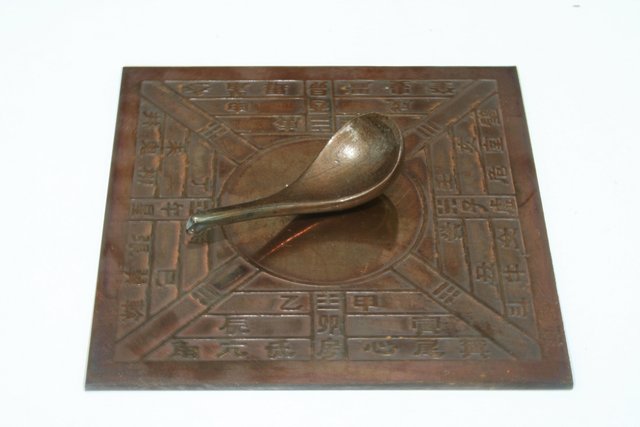
Model of ancient Chinese compass. Source:Wikimedia - CC BY-SA 3.0.
The advent of gunpowder, compassed, paper making and printing has shaped the spheres of Warfare, geography, education and record keeping respectively, these four great inventions could be traced down to the over one (1) billion population fast developing Asian country of China.
Every continent and it’s individual countries share a place in the history of technology as each one made their own development independent of other countries, but unarguably, there was great interaction, imitations and modifications of these technologies. The Roman Aqua Appia is the most pronounced aqueduct; but the Egyptians had built a prototype about 600 years earlier.
Who is now the father of modern engineering and technology? The Egyptians, Romans or the Greeks? Maybe you might have another country in mind as history is unable to put down everything on paper. Many other countries also have not developed good record keeping system at the needed time and thus has no record of their technology.
Your contributions are welcomed and much needed
REFERENCES
2.Ancient Egyptian engineering achievements
3.The inventions and Technology of ancient Greek
4.Ancient Greek technology~wikipedia
5.history of science and technology in China~wikipedia
If you write STEM (Science, Technology, Engineering, and Mathematics) related posts, consider joining #steemSTEM on steemit chat or discord here. If you are from Nigeria, you may want to include the #stemng tag in your post. You can visit this blog by @stemng for more details. You can also check this blog post by @steemstem here and this guidelines here for help on how to be a member of @steemstem. Please also check this blog post from @steemstem on proper use of images devoid of copyright issues here.

i m a civil engineer...what u do ?
I am a medical student
u hve to remember ,,,and we have to think
Yeah
Hello! I find your post valuable for the wafrica community! Thanks for the great post! @wafrica is now following you! ALWAYs follow @wafrica and use the wafrica tag!
Great post! Resteemed. Yes, Romans shaped our world and added technology to the ancient world. They built civilization.
Thanks for reading through.
I agree that Romans did many tremendous things, but nevertheless, the efforts of other countries are also comparable, a very big debate.
Hello @joelagbo
Kinda controversial topic as folks would go on to fight for their nation's interests. Personally, I would say every continent played a part in the development of engineering. And I like the fact that you emphasized this in the conclusion paragraph of this piece.
Another nice piece by you
@eurogee of @euronation and @steemstem communities
Thank you so much.
Maybe the argument will avail us the opportunity to learn some undocumented traditional crafts which history forgot to transfer to us in paper.
Exactly!
✌️✌️
wow great post ....
Thank you
Awesome post. But Egyptians are still making waves in modern day technology. I think you should check out the Egyptian aviation sector.. Resteemed!!
Surely I will.
Thanks a lot for stopping by and resteeming
Revolution has started thousands of years ago. Discoveries of ancient items which even surpass what we use today have created some mysteries we cannot still understand. Nevertheless of the true country which started all these engineering works, Egyptians have been well known for their contributions towards the Science and Technology which we use today.
Great post daddy @joelagbo.
I am @teekingtv and I write STEM.
Yes, the Egyptians are more pronounced than any other country when it comes to the roots of engineering, but other countries have also made contributions which places them on the same books as the Egyptians. But life might not have started in Egypt, if this is the fact, then I think Engineering started off somewhere which is not Egypt, or maybe somewhere close to Egypt.
That ‘daddy' name suits you more...Lol
Thanks for stopping by.
This is an amazing piece of work. The world at large should really appreciate all 3 countries that we know according to history made science and technology what it is today; special hails to Egypt, Greece and Rome.
Although, as you mentioned in the conclusion; some other countries might have really contributed a great deal but unfortunately did not keep their records.
It's really hard to say who the fathers of modern engineering are? That would be an endless debate. They all contributed their parts, there was imitation and all. But it's good that the debate continues, because it's only out of the struggle for originality can we understand more hidden truths on the topic.
Thanks a lot for sharing. I enjoyed reading through!!!
It's my pleasure, the debate is endless,but in the process there'd be a lot to learn.
Congratulations! Your post has been selected as a daily Steemit truffle! It is listed on rank 15 of all contributions awarded today. You can find the TOP DAILY TRUFFLE PICKS HERE.
I upvoted your contribution because to my mind your post is at least 25 SBD worth and should receive 179 votes. It's now up to the lovely Steemit community to make this come true.
I am
TrufflePig, an Artificial Intelligence Bot that helps minnows and content curators using Machine Learning. If you are curious how I select content, you can find an explanation here!Have a nice day and sincerely yours,

TrufflePigThis post has been voted on by the steemstem curation team and voting trail.
There is more to SteemSTEM than just writing posts, check here for some more tips on being a community member. You can also join our discord here to get to know the rest of the community!